Saigon Chinatown (also known as Cho Lon or Chinatown market) is a must-visit if you are looking for a blend of vibrant sights, exotic smells, and a memorable shopping experience in the middle of Saigon.
Follow Vietnamtour.in today to discover the distinctly Chinese character here. We will show you everything from what to enjoy and how to make your trip wonderful. Stay tuned!
Location
Cho Lon is concentrated in District 5, spanning slightly into Districts 6 and 11 of Ho Chi Minh City. The area is surrounded by 3/2 Street to the north and the Saigon River to the south. Plus, it is not too far from the city center (about 5-6 kilometers to District 1).
Historical Background
Saigon Chinatown has a long history dating back to the 18th century when the Ming Dynasty collapsed. Chinese descent (particularly Chaozhou and Fujianese people) were afraid of being punished, so they ran away to Cho Lon to start their new lives. This place became a major business hub until 1932, when it went under the urbanization of Saigon.
Saigon Chinatown had to deal with the chaos of many wars during that time, from the U.S. forces to the Sino-Vietnamese War. By 1956, it was no longer an official city. Instead, it became a cultural area that included Districts 5, 6, and 11. Still, the essence of this town remained, nurturing the architecture and customs of the Vietnamese-Chinese people.
Vietnamese-Chinese Fusion
If you take a walk through Cho Lon Market Saigon, you can witness the Vietnamese-Chinese fusion showcased through the buildings, people, food, and other cultural aspects.
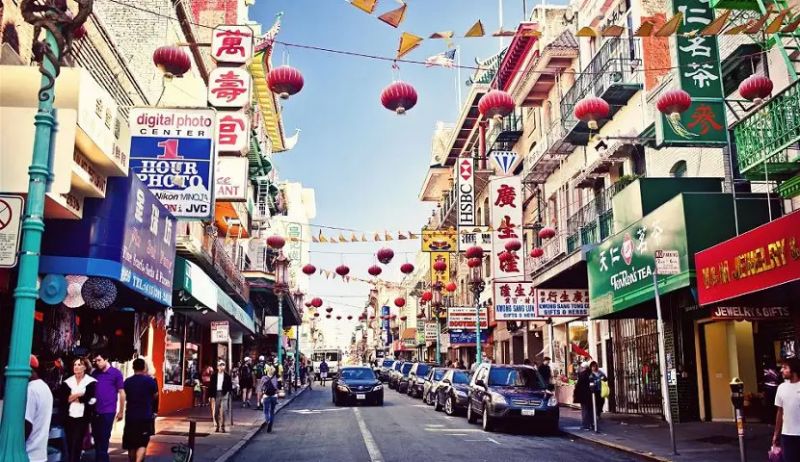
Hundred-year-old homes and shophouses are popular in this town. They hint at Vietnamese architecture while still retaining the carvings and details of Chinese people. Temples and pagodas also have a unique mix of Vietnamese and Chinese architectural styles. The celebrations and rituals may have Vietnamese or Chinese roots, but they’re often celebrated by the whole community, showcasing a beautiful blend of traditions.
We can not pass through the fusion without mentioning cuisine here. You will find thousands of food stalls with signs in Vietnamese and Chinese typos. They mainly serve traditional Chinese dishes with additional touches of Vietnamese spices and flavors.
Best Time To Visit
The best time to visit Saigon Chinatown is during the dry season (December to April). It is when the weather is pleasant and sunny, making it more comfortable to walk around the town.
If you want to experience the unique culture of the Chinese community, consider visiting this place during remarkable festivals, such as the Lunar New Year (usually in January or February) or the Mid-Autumn Festival (August in the lunar calendar).
How To Get There
Since Saigon Chinatown is located not too far from Ho Chi Minh City center, getting there is a breeze. Here are popular methods for your consideration:
- By taxi: It just takes around a 10-minute taxi ride from most District 1 hotels
- Booking ride-hailing apps: Grab, Be, Go Jek, or Xanh SM will offer you a quick and convenient experience.
- By bus: If you desire a more affordable method, catch a bus to Cho Lon station. For instance, if you depart from Ben Thanh market in District 1, opt for bus number 01.
>> Read more: Must-Visit Markets in Ho Chi Minh City
What To Expect In Saigon Chinatown
The Bustling Binh Tay Market
This market was built in the 1880s, deepening the rich cultural heritage of Saigon Chinatown. While the famous Ben Thanh market caters mainly to tourists, Binh Tay Market is a shopping paradise for locals and visitors who want to discover the culture and lifestyle of Chinese-Vietnamese people.
Here, you can find a wide variety of unique delicacies, such as Pho, banh bao (savory buns), and spicy noodles. If you seek souvenirs, you can head to stalls selling handicrafts, lacquerware, or delectable snacks. They also sell fresh fruits, vegetables, fresh produce, and traditional Chinese ingredients to serve locals’ daily lives.
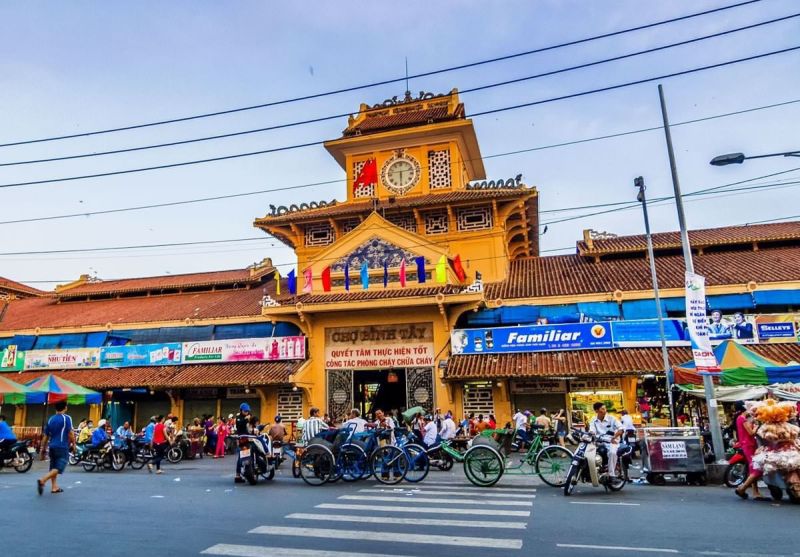
The Cultural Significance Of Thien Hau Pagoda
Built in the mid-18th century by Cantonese migrants, Thien Hau pagoda is dedicated to Mazu, the Chinese Goddess of the Sea. This is one of Saigon’s oldest Chinese pagodas, located in the middle of Saigon Chinatown.
This building is outstanding for its centuries-old antique touches. The wooden statues, stone steles, and intricate bas-reliefs tell tales of Chinese tradition and culture. Moreover, there are unique pendants hanging overhead, where visitors can record their wishes and seek blessings from Mazu.
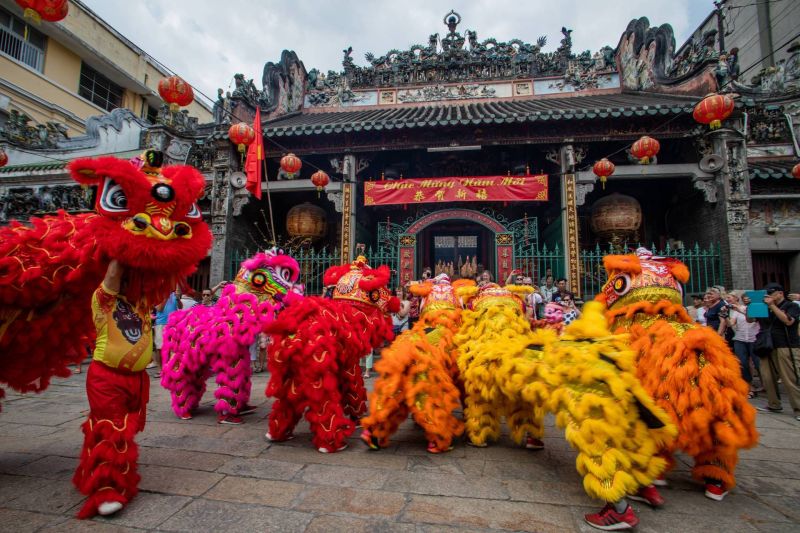
The Serenity Of Quan Am Pagoda
This is another old-aged pagoda that you should visit when getting to Chinatown Saigon market. Quan Am Pagoda, established in the 19th century, was dedicated to the Goddess of Mercy. It serves as a place of worship for both Vietnamese and Chinese Buddhists, with elements of Taoism and folk religion reflecting the rich cultural blend of Cho Lon.
This pagoda is rather small compared to Thien Hau Pagoda. However, it still captivates with its vibrant colors and various hints of guardian spirits and characters from traditional folklore.
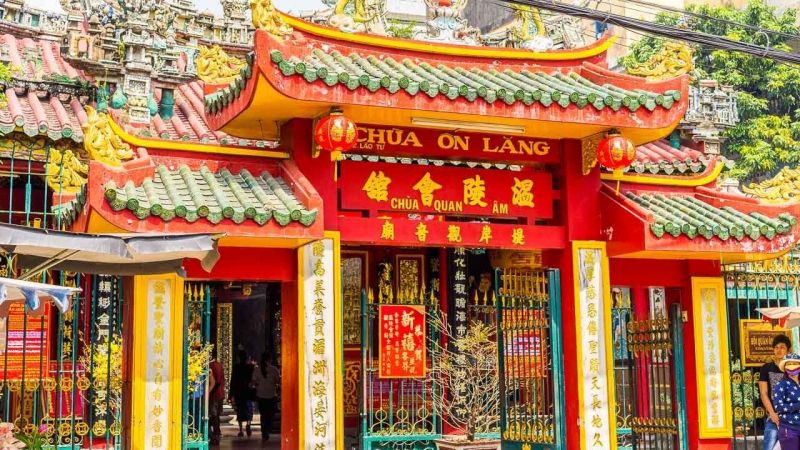
The Gothic Charm Of Cha Tam Church
Cha Tam Church, also known as St. Francis Xavier Church, is a significant symbol of the Vietnamese-Chinese Catholic spirit in Saigon Chinatown. As you step inside the church, you will be greeted by a fascinating fusion of styles. It’s the Gothic elements, which are typically found in Catholic churches intertwine with traditional Chinese influences
With its unique architectural style and historical significance, Cha Tam Church will add a touch of tranquility and antiques to your Saigon adventure.
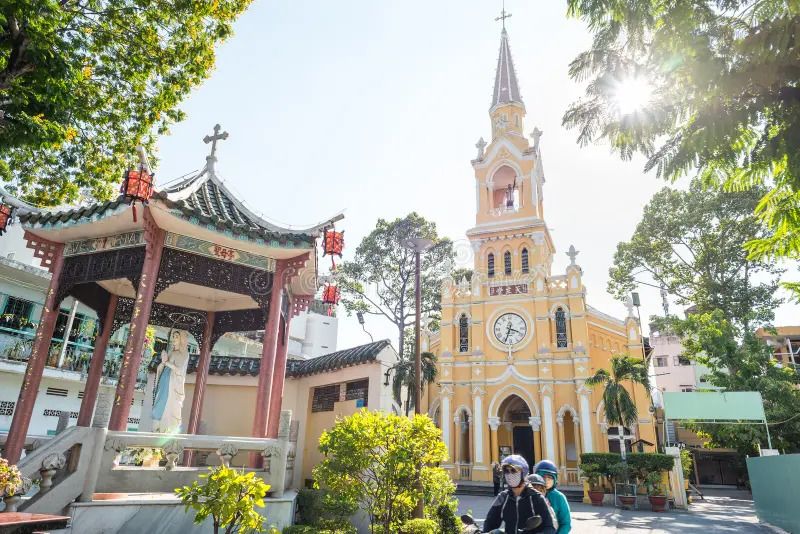
Amazing Street Food In Cho Lon
Most tourists come to Chinatown not only to discover its traditions and architecture but also to enjoy the best delicacies in Saigon. As mentioned, food courts here serve you diverse dishes from Vietnam and China. The most recommended ones are:
- Roasted duck: The dish is crispy on the outside and juicy on the inside, often served with signature sauces, vegetables, and sticky rice
- Chicken rice: Tender, poached chicken served over fragrant rice cooked in flavorful chicken broth
- Fish noodle soup: A perfect combination of sweet broth, fresh thin-sliced snakehead fish, and Chinese-style noodles
- Dumplings: The famous dough pockets filled with savory vegetables, seafood, and meat
- Sweet soup: A refreshing dessert with diverse flavors, such as tea egg sweet soup, lotus seed soup, tofu, etc
Besides, Ba Lu Coffee, with over 60 years of history in Phung Hung Market is a perfect spot for Saigon Chinatown cafe. The café still uses the old method of roasting beans over charcoal, enhanced with butter, salt, and a hint of alcohol to create its distinctive aroma and flavor. Visit Ba Lu Coffee to experience not only its unique taste but also a journey through the nostalgic charm of old Saigon.
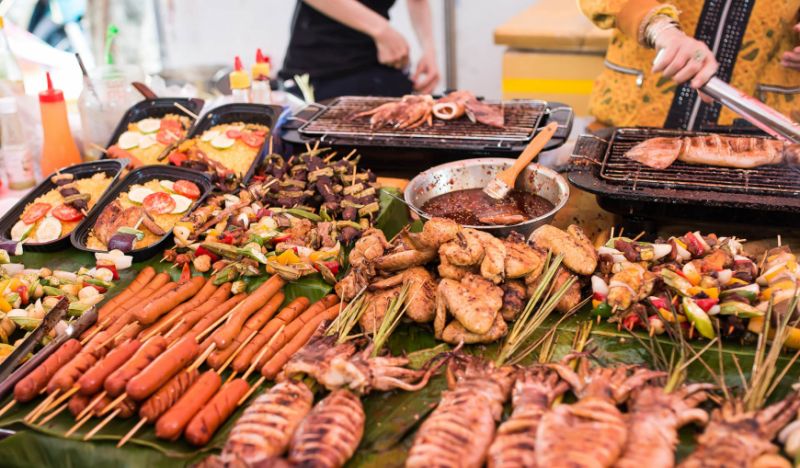
Attractions Nearby
- Independence Palace: A large tourist attraction that offers you the story of Vietnam’s victory and territorial integrity
- Notre Dame Cathedral: This iconic French colonial charm captures visitors with its shining architecture and religious significance
- Saigon Central Post Office: The colonial-era design and intricate details of this building will be a must-visit for architecture enthusiasts
>> You can read: Top 17 Things to Do in Ho Chi Minh City in 2025
Notes/Tips When Visiting Saigon Chinatown
- Opt for lightweight clothing and comfortable shoes
- Pack a hat, sunglasses, suncream, and water to resist the sunny weather
- Dress modestly when visiting temples and pagodas
- Be aware of your belongings
- Respect the local customs and traditions
- Go with a travel guide to explore everything in details
Conclusion
Saigon Chinatown captures the hearts of those looking to explore Vietnam’s cultural richness. As you arrive here, you will be treated to a party of unique sights, sounds, and aromas. Take a look at our Vietnam tour packages and book a trip with Vietnamtour.in, and our local guides will walk you through every corner of the town and Ho Chi Minh City.
OTHER ATTRACTIONS IN HO CHI MINH CITY

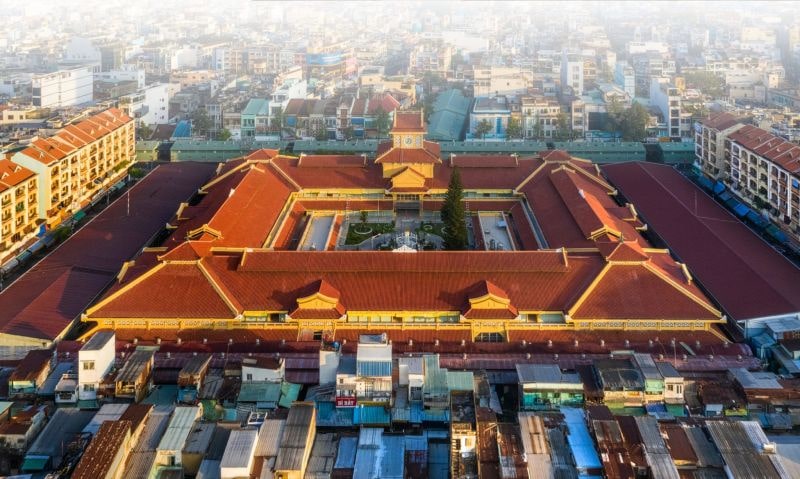
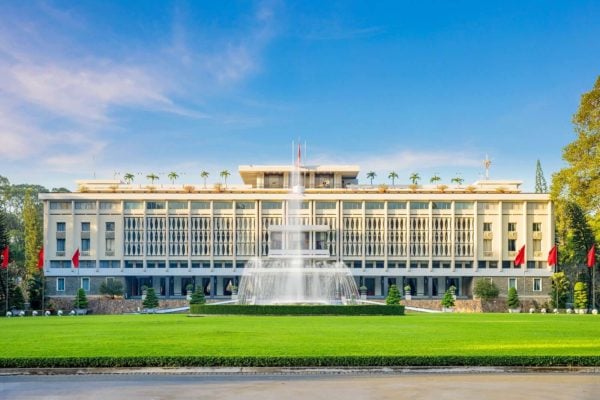
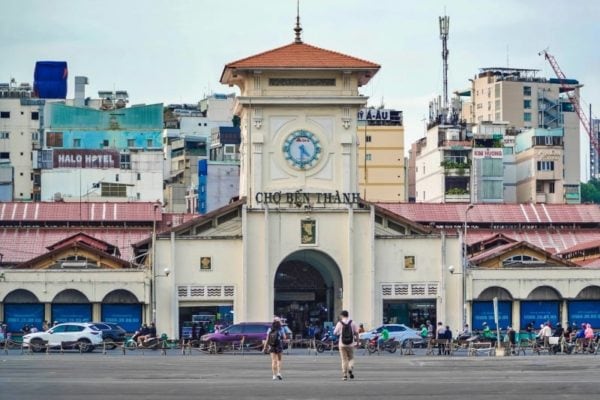
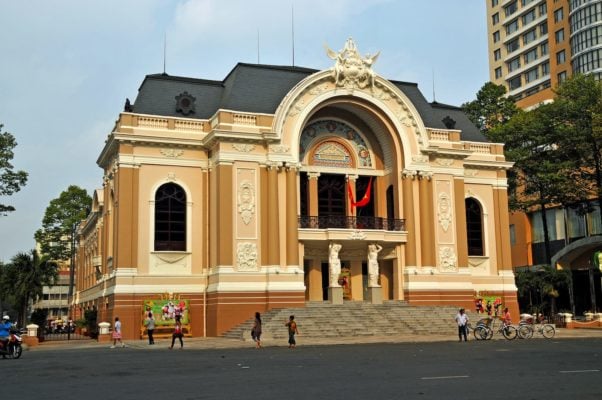
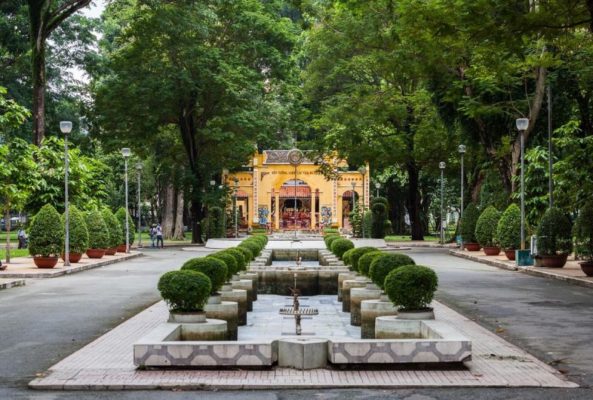
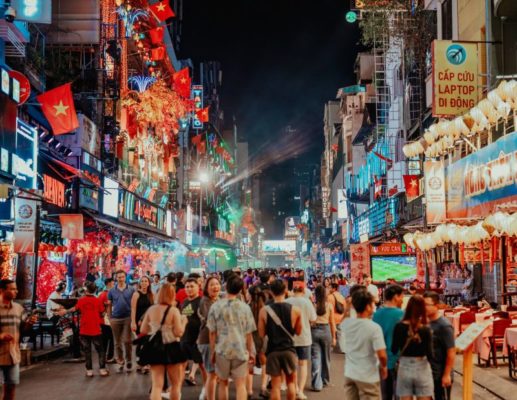
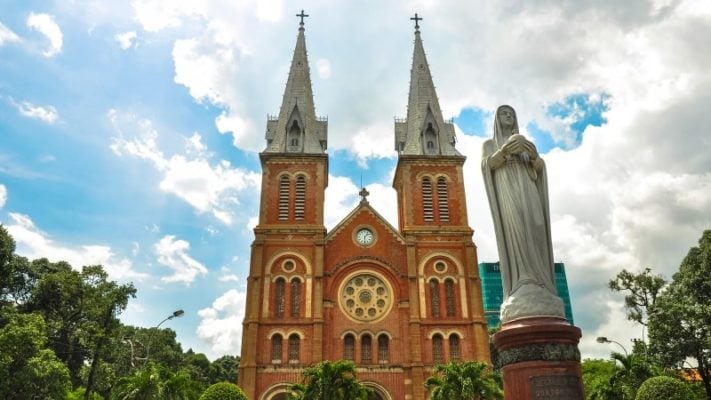
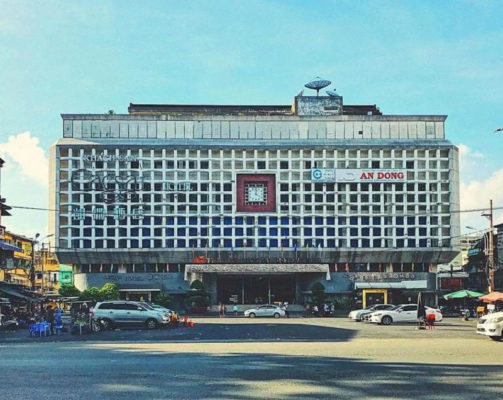
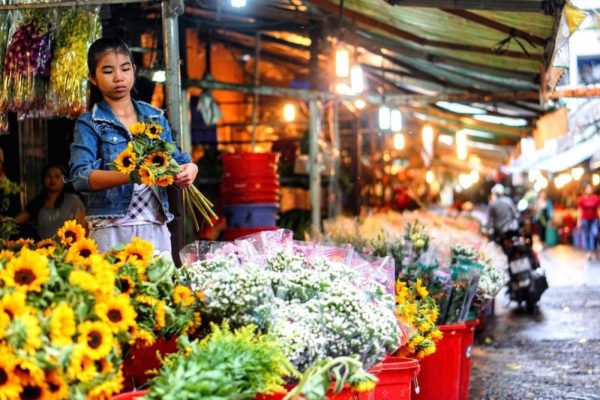

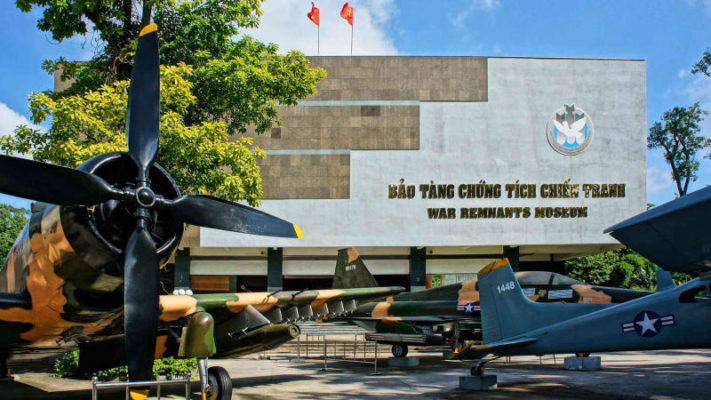
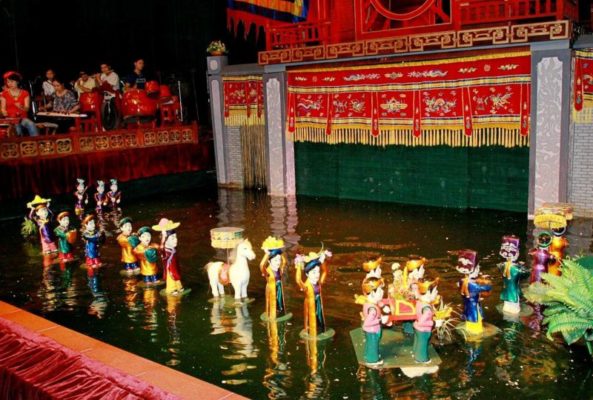
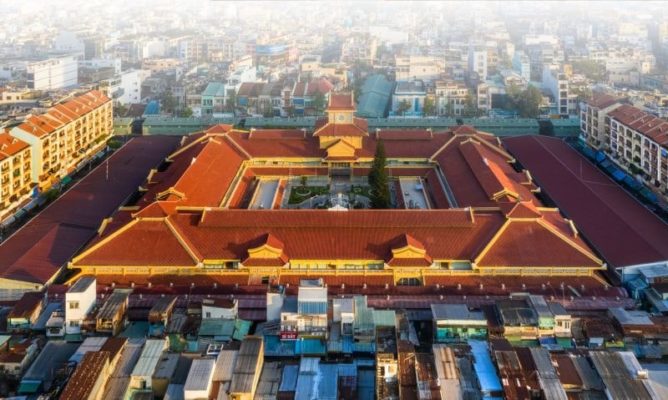
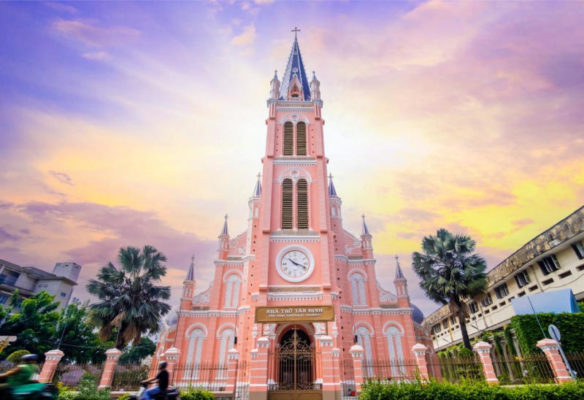

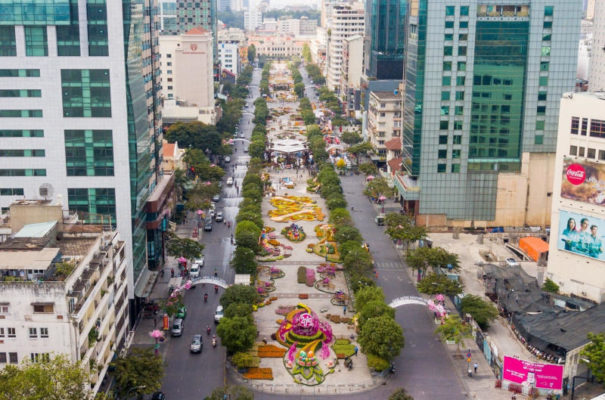
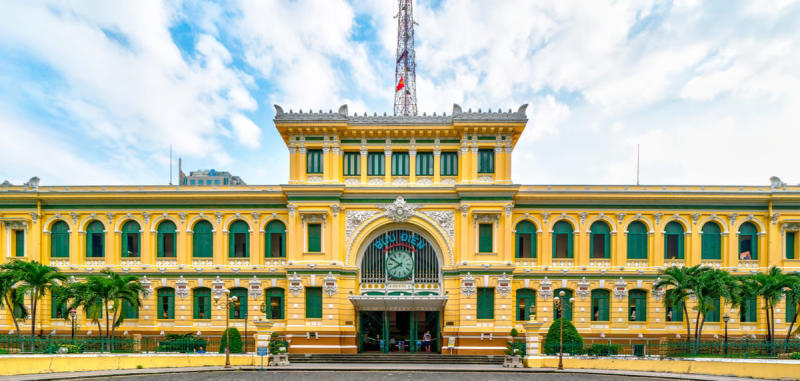
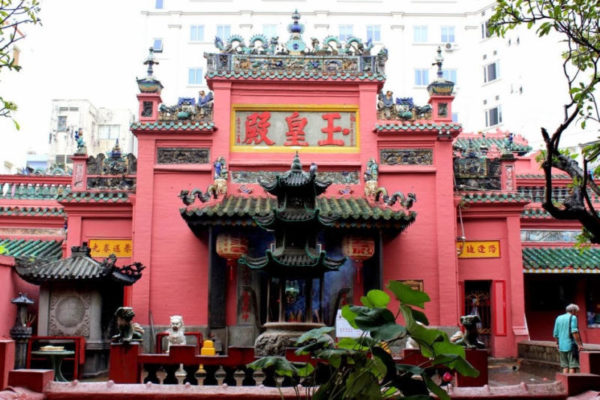
1 Countries 6 Cities
Vietnam Highlights Discovery
Departure City: Mumbai
Latest Departure Date: December 06 2025
15 seats left
Starting fromSave 35% ₹1,12,000
per person on twin sharing with airfares